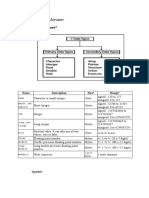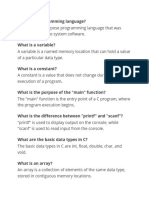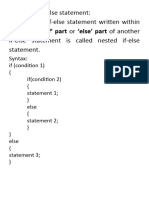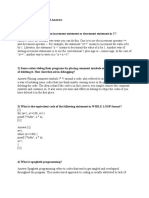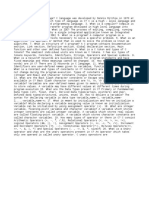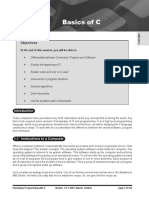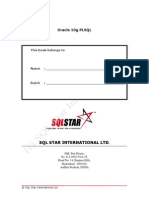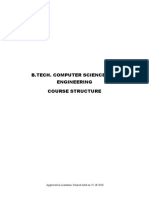0% found this document useful (0 votes)
9 views10 pagesPrograming Part 2
The document provides an overview of programming concepts in C, including algorithms, flowcharts, iteration, loops, and functions. It explains various programming constructs such as break and continue statements, switch statements, pointers, and recursion, along with their advantages and disadvantages. Additionally, it covers the differences between call by value and call by reference, as well as global and local variables.
Uploaded by
Ritam SahaCopyright
© © All Rights Reserved
We take content rights seriously. If you suspect this is your content, claim it here.
Available Formats
Download as PDF, TXT or read online on Scribd
0% found this document useful (0 votes)
9 views10 pagesPrograming Part 2
The document provides an overview of programming concepts in C, including algorithms, flowcharts, iteration, loops, and functions. It explains various programming constructs such as break and continue statements, switch statements, pointers, and recursion, along with their advantages and disadvantages. Additionally, it covers the differences between call by value and call by reference, as well as global and local variables.
Uploaded by
Ritam SahaCopyright
© © All Rights Reserved
We take content rights seriously. If you suspect this is your content, claim it here.
Available Formats
Download as PDF, TXT or read online on Scribd
/ 10





















